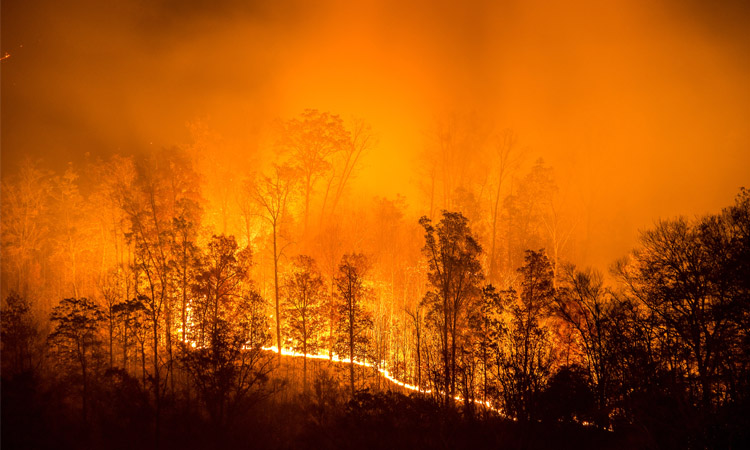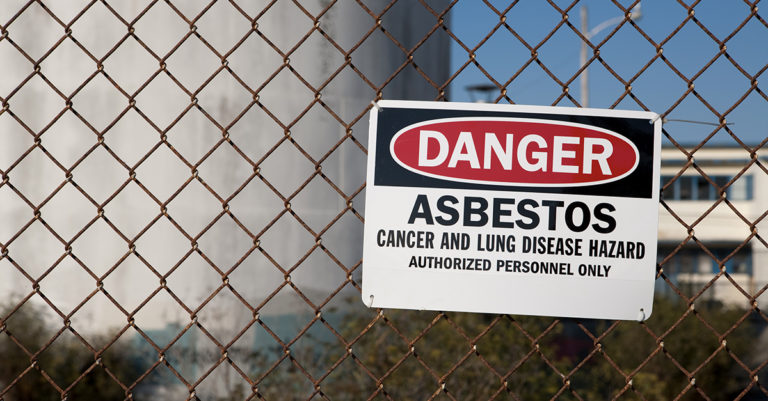
Wildfires not only put lives in danger from fast-moving flames, they also devastate communities in terms of lost property and personal belongings. But even after the fires have been extinguished and families and towns start to rebuild, they must deal with persistent health risks due to the blazes. The remaining ash can contain dangerous carcinogens such as asbestos and chemicals from paints, pesticides and other synthetic materials.
Both firefighters and cleanup workers can be exposed to asbestos, a mineral that for decades was used widely as a component of many different building materials. Often used in older homes, asbestos-containing products have long been known to cause the lethal cancer mesothelioma.
Many of the long-term health consequences from wildfires are not fully known yet, such as the effects smoke inhalation may have on the body. These risks will only become more widespread in the future as communities continue to face the possibility of wildfires and more firefighters put their lives and health in danger. The hazard firefighters face is not just the blaze itself, but the chemicals and asbestos they may inhale in the line of duty.
Where There’s Smoke, There’s Carcinogens
A sobering research study published by scientists at the National Institute for Occupational Safety and Health (NIOSH) found that firefighters had a greater risk than the rest of the United States population for several different types of cancer. Firefighters also had a higher risk for cancer in general, and they were twice as likely to develop mesothelioma, a lethal form of cancer that most commonly affects the pleural lining of the lungs. The scientists who conducted this study found that the increased risk of mesothelioma was directly tied to firefighters’ high rate of asbestos exposure.
Asbestos is a mineral that occurs naturally. It was long used in various construction materials due to its natural strength and fireproofing properties, yet this flame-resistant substance was recognized as early as the 1930s as being highly carcinogenic. Multiple research studies since then revealed that inhaling even a single asbestos fiber could cause mesothelioma.
While more than 55 countries have banned asbestos, the United States has not. As a result, asbestos is still used in some consumer products and building materials. Asbestos fibers can also be released into the atmosphere when older buildings are remodeled or destroyed. Individuals working in construction or firefighting are at particularly high risk for mesothelioma, which tends not to develop until several decades after exposure.
Protective Gear Not Foolproof
Cancer is a leading cause of death for firefighters who are in active duty. Statistics from the International Association of Firefighters (IAF) suggest that 60 percent of firefighters will die from some type cancer, making the disease far more dangerous than fires themselves. Most of these carcinogens come from burning materials such as chemical waxes and coatings, plastics and other synthetics found in consumer goods. Scientists are not yet certain exactly what kinds of hazardous substances may be released when these objects are burned and what harm they may inflict on firefighters.
The risk of lung cancer increases with each fire someone fights. While a firefighter’s protective gear may shield against the heat of the blaze, the heavy coat and pants do not seal together. Smoke, asbestos, and toxic dust can still seep under those garments and be inhaled by firefighters.
Asbestos fibers can also cling to clothing. It is not easy for firefighters to wash their gear, since they need specialized machines that not all fire protection districts can afford. While cleaning one’s clothing after a fire is key to lowering the risk of mesothelioma and other cancers, not all firefighters have such a luxury.
Wildfire Risk on the Rise
News coverage tends to cover wildfires only while the flames are raging, yet the real peril is often found in the smoke and ash following these tragedies. With the number of wildfires rising every year, the risk to human lives and health will only increase.
We must continue to be aware of the dangers posed to firefighters, first-responders, cleanup workers, and the general population, particularly how these fires greatly increase the chance of developing mesothelioma and other cancers. It is yet another reason to continue the fight for an asbestos ban that is long overdue.




